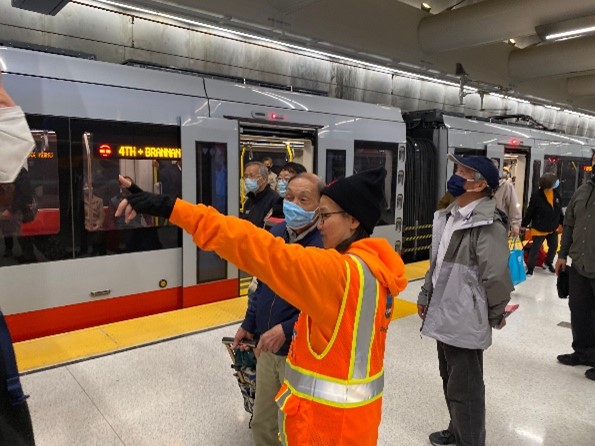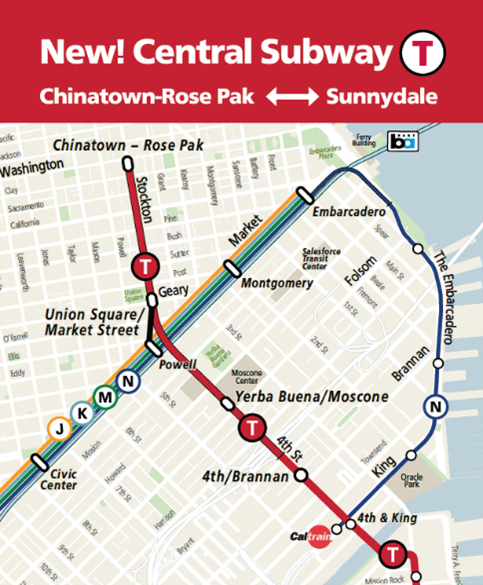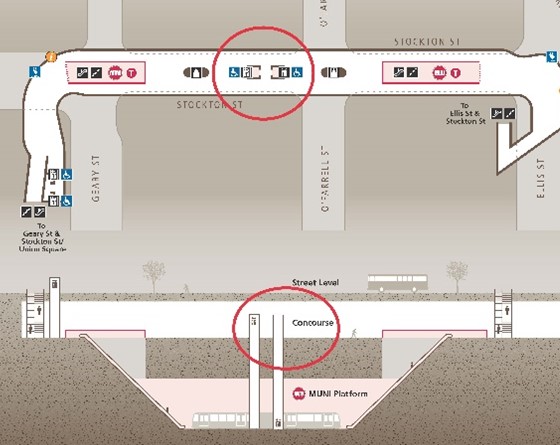By Mariana Maguire

SFMTA Ambassadors are helping customers navigate the new Central Subway stations and Metro service changes.
As we prepare for the start of new T Third service on Saturday, January 7, between Sunnydale and Chinatown-Rose Pak Station, here are some important travel tips to help you plan your new connections.

New T Third service via Central Subway starts January 7 with service between Sunnydale and Chinatown-Rose Pak Station.
For J Church, K Ingleside, M Ocean View Customers
- For stops along the Embarcadero and King Street including 2nd & King (Oracle Park) and 4th & King (Caltrain), take the N Judah.
- For service north to Chinatown-Rose Pak Station or south to Yerba/Buena Moscone Station, 4th & King streets (Caltrain), UCSF/Chase Center and beyond to Sunnydale, transfer at Powell Station to Union Square/Market Street Station and take the new T Third. The N Judah will also continue to serve 4th & King (Caltrain).
For T Third Customers
- For service to Balboa Park, transfer at Union Square/Market Street Station to Powell Station and take the K Ingleside westbound. Or take any westbound J Church or M Ocean View.
- For service to 2nd & King (Oracle Park) and stops along the Embarcadero, take the N Judah at 4th and King streets, next to the Caltrain station.
- For service to all Market Street Metro stations, transfer at Union Square/Market Street Station to Powell Station and take the K Ingleside and M Ocean View for Embarcadero to West Portal Stations or take the N Judah and J Church for Embarcadero to Van Ness Stations.

Elevators to trains at Union Square/Market Street Station are located in the middle of the concourse with their own fare gates.
Accessibility at New Union Square/Market Street Station
The new Central Subway stations are more accessible to riders with disabilities, with level boarding between the train and platform and two glass elevators between each level for more reliability, light and visibility. Once service between Chinatown-Rose Pak and Sunnydale starts January 7, use our Elevator Status Page to help you plan your trip.
Here are a few key tips to consider if you are taking the elevators at the new Union Square /Market Street Station
- Elevators between street level and the concourse are located at two locations:
- The new station entrance at Geary and Stockton, at Union Square.
- The existing BART and Muni elevator on Market and Stockton streets. Exit the elevator to the left at concourse level and follow signs to Union Square/Market Street Station.
- The first set of fare gates at both entrances to the Union Square/Market Street Station lead to a long set of escalators. The elevators from concourse to platform level are in the center of the concourse with their own fare gates.
Find additional information about new connections and wayfinding in our new T Third service Frequently Asked Questions.
Published January 04, 2023 at 08:19AM
https://ift.tt/H5PrxtG
Nhận xét
Đăng nhận xét